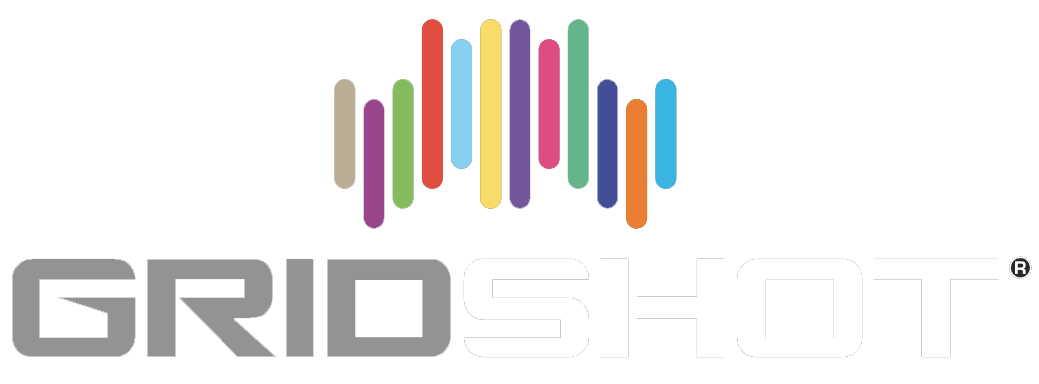4K UHD
GRIDSHOT playout solution is supporting 4K UHD resolution. This resolution is four times as many pixels and also twice the frame rate compared to Full HD. This means 50 frames per second with a resolution of 3840 x 2160 for PAL regions.
Our 4K UHD implementation is based on the latest technical standards and codecs, and built for the real-time demands in the broadcast industry. The most common codec for 4K UHD is the H.265 / HEVC video codec. We are working with different hardware integrators such as NETINT Technologies to make it possible to offer a cost efficient 4K UHD solution on commercial off-the-shelf (COTS) server hardware. With our partners we developed various efficient features to solve color spacing issues related to the deployment of 4K playout in combination with H.265 / HEVC video codec which are new in the broadcast industry.
Dynamic Color Space Signaling (DCSS) has been developed to automatically detect the original color space of the source content (either BT.709 also known as SDR or BT.2020). The Dynamic Color Space Signaling (DCSS) uses custom-built embedded “change-to” triggers in the VUI syntax elements of the HEVC bitstream. These signal the color space of the original source content, thus triggering the receiving side (e.g. television sets and/or set top boxes) to switch automatically to the correct color space mappings of the decoded signal before display on the device. It seems that this detection of the signaling is supported by most 4K television sets, provided that the signal/stream is transparently delivered from the origin contribution point to the end user.
A second new feature built into our playout is dynamic HDR HLG (High Dynamic Range Hybrid Log Gamma) signaling. In this case signals are provided to the receiving side (e.g. television sets and/or set top boxes) which will (provided that the detection of the signal is supported also in the transcoding process) automatically enable HDR HLG (High Dynamic Range Hybrid Log Gamma) display mode on television sets and/or set top boxes. In addition, the GRIDSHOT® playout supports both the European Telecommunications Standards Institute (ETSI) and Advanced Television Systems Committee (ATSC) standards describing the embedding of transfer coefficients for HDR HLG (High Dynamic Range Hybrid Log Gamma) applications. This ensures broad compatibility of HDR HLG (High Dynamic Range Hybrid Log Gamma) in different regions (PAL, NTSC, SECAM) during the current transitional phase towards HDR TV.
This dynamic approach towards color spacing and HDR HLG (High Dynamic Range Hybrid Log Gamma) signaling makes it possible to support a wide variety of source content in different color spaces and SDR (Standard Dynamic Range) or HDR (High Dynamic Range) flavors. This in turn solves the current problems and positively impacts the viewing experience of the end user. A majority of legacy content is still recorded in SDR (Standard Dynamic Range). Whilst there are solutions to upgrade SDR (Standard Dynamic Range) to HDR (High Dynamic Range) by means of tonemapping, this process is by no means comparable to native HDR (High Dynamic Range) recording from the very first stages of content production. Because the GRIDSHOT® playout dynamically embeds such color space and SDR (Standard Dynamic Range) / HDR (High Dynamic Range) metadata, it ensures that the end user irrespective of origin of the content, will always views the content’s color spacing as it was intended. This also solves the common end user’s issues of SDR (Standard Dynamic Range) TV content looking reddish, currently caused by predefined, fixed HDR (High Dynamic Range / BT.2100) output. The GRIDSHOT® playout solution handles this dynamically, thus provisioning increased flexibility for any 4K TV channel. This also facilitates setting up channels with mixed 4K UHD (BT.2020 / BT.2100 / BT.709) and HD (BT.709) source content.
The GRIDSHOT® playout solution optionally offers fixed color spacing and HDR HLG (High Dynamic Range Hybrid Log Gamma) if required. One option is that our playout server will perform a color space conversion to meet the output requirement. Another option is to (automatically) transcode the source content before it is entered into the GRIDSHOT® Media Asset Management (MAM) system. These options highlight that our GRIDSHOT® playout is prepared for a wide variety of scenarios and potentially caters for multiple cost-efficient solutions for each broadcaster.
Knowing that many content owners deal with legacy content libraries shot in lower resolutions and possibly lower frame rates, the GRIDSHOT® playout solution has created support for mixed source content acceptance. By supporting mixed 25 and 50 fps content, our playout facilitates the transition for broadcasters from HD to 4K UHD broadcast including current color spacing issues. For broadcast providers the advantage is that such flexibility reduces the number of requirements that their source content needs to conform to.
The fully redundant GRIDSHOT® playout is built for flexibility and stability to efficiently broadcast 4K UHD signals while simultaneously solving mixed source content provision and color spacing issues. The supported outputs for 4K UHD are IP (multicast / unicast), ASI, SRT and HLS.
Contact
GRIDSHOT® is owned, trademark and operated by theFrontDoor, is situated at a stone’s throw from Schiphol Airport, the Netherlands. The GRIDSHOT® playout-, contribution- and distribution system has been developed by our in-house software engineers. GRIDSHOT® has a proven track record for playout- and broadcast services for over 14 years without a single outage. GRIDSHOT® is reliable, flexible and (cost-) efficient in providing stable and secure broadcast signals and streams around the world at high quality and low cost.
